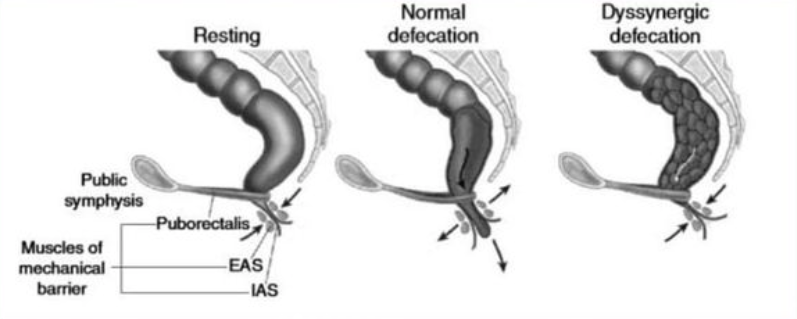Constipation and your Pelvic Floor
Constipation is a common gastrointestinal issue that can lead to discomfort and inconvenience as well as pelvic floor dysfunction. While dietary factors and hydration play a crucial role in bowel regularity, the intricate workings of the pelvic floor - and specifically the puborectalis muscle are often overlooked contributors to constipation
The Pelvic Floor
The pelvic floor is a network of muscles, ligaments, and connective tissues that forms a supportive hammock-like structure at the base of the pelvis. It plays a pivotal role in maintaining urinary and bowel continence, sexual function, and providing stability to the pelvic organs. The puborectalis muscle, which is a part of the pelvic floor, specifically influences bowel movements and contributes to fecal control.
Puborectalis Muscle: The Bowel Gatekeeper
The puborectalis muscle wraps around the rectum and acts as a sphincter-like mechanism, forming a U-shaped sling that creates an angle between the rectum and the anal canal. This angle, known as the anorectal angle, helps to keep your stool in, until it's time for a bowel movement. When it's time to defecate, the puborectalis muscle relaxes, allowing the rectum to straighten and facilitate stool passage.

Constipation and the Role of the Puborectalis Muscle
In cases of chronic constipation, the proper coordination and relaxation of the puborectalis muscle can be disrupted. Tension or excessive contraction of this muscle can lead to difficulties in straightening the rectum and allowing the passage of stool. This phenomenon, known as anismus or dyssynergic defecation, is a common cause of obstructed bowel movements. Individuals with anismus may experience straining, incomplete evacuation, and a feeling of rectal fullness.

Managing Constipation Through Pelvic Floor Awareness
Understanding the role of the puborectalis muscle in constipation can open the door to effective management strategies. Here are some approaches to consider:
1. Pelvic Floor Exercises: Engaging in targeted pelvic floor exercises, such as biofeedback and relaxation techniques, can help improve the coordination of the puborectalis muscle and enhance its relaxation during bowel movements.
2. Positioning: Maintaining the proper squatting position during defecation can aid in straightening the rectum and allowing for smoother stool passage. Using a Toilet Stool to elevate your feet while sitting on the toilet is essential.

3. Diet and Hydration: Alongside pelvic floor-focused strategies, ensure you're consuming a fiber-rich diet and staying adequately hydrated. These factors contribute to healthy bowel movements and keep your stools soft and easy to pass. You are aiming for a type 3-4 on the Bristol stool chart.
4. Pelvic Floor Physio or colorectal surgeon: If constipation persists or worsens, consult a healthcare professional. They can provide a comprehensive evaluation, including pelvic floor assessment, and recommend appropriate treatments. You can find a Pelvic Floor Physio near you, using our clinician locator.






